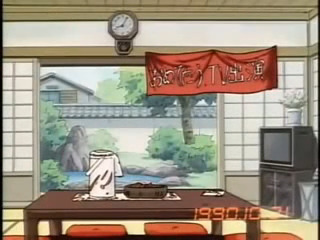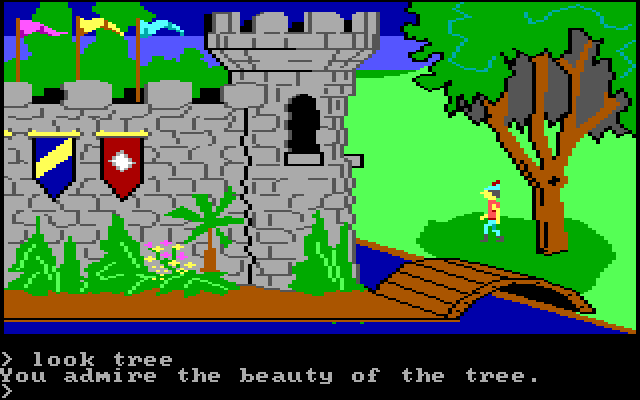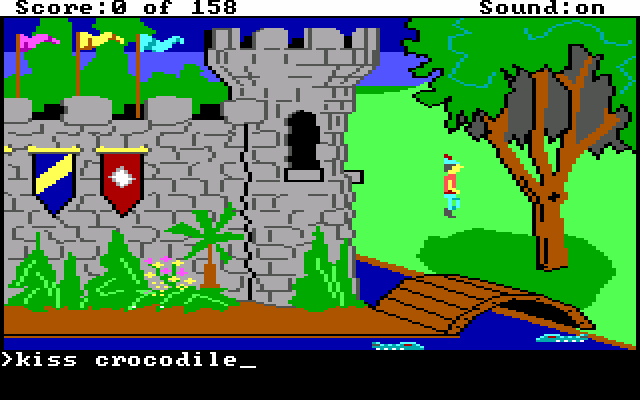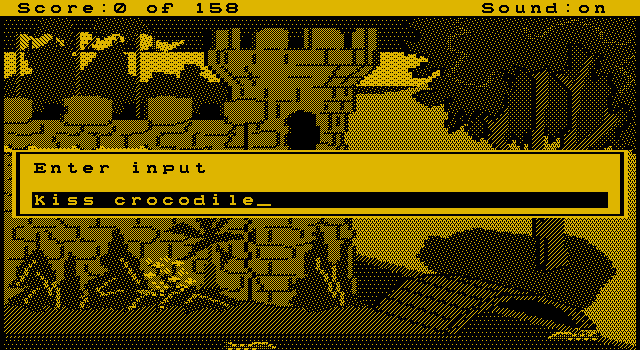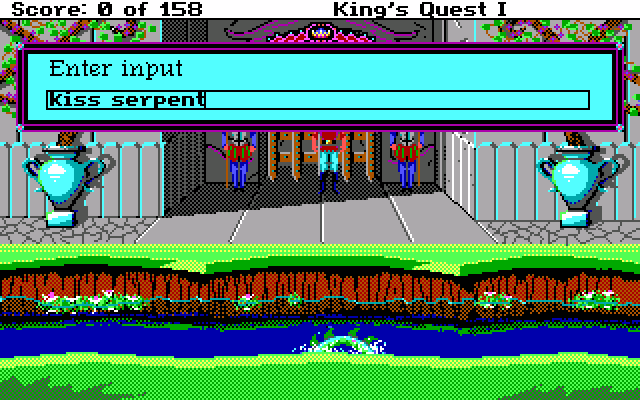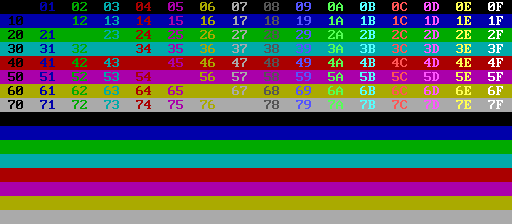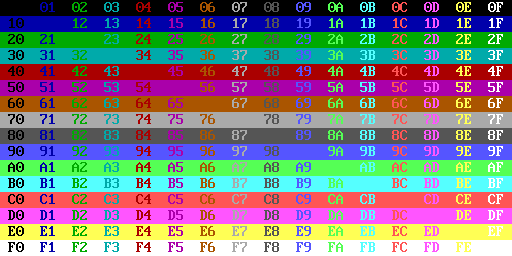“Watch out! A poisonous snake!”
Who among us who have played King’s Quest V – Absence Makes the Heart Go Yonder doesn’t remember this iconic line?
Thing is, it is of course wrong. The snake is venomous, in that it bites you and you die. Indeed, the narrator gets it right when you look at the snake: “A large, venomous snake blocks Graham’s passage to the east.”
I have nine different versions of this game and only two of them get it somewhat right.
The original diskette version with the separate “walk” and “travel” icons? Poisonous. The CD version? Poisonous, even with some script changes!
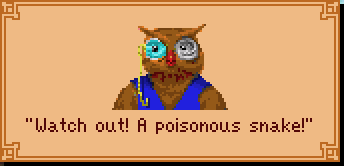
The Amiga version? Poisonous.
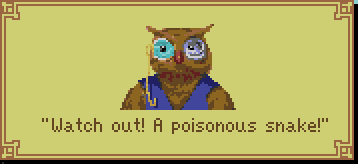
The v55 and v62 EGA releases? Poisonous.
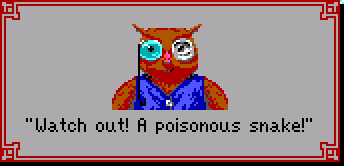
The French diskette version? Venimeux.
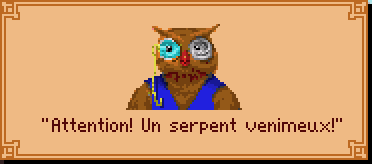
The German diskette version that I acquired while I was composing this post? Eine Giftschlange.
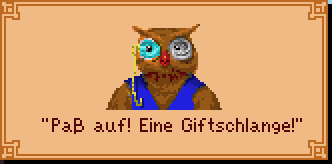
Now, I myself am Dutch, and I can confirm that in Dutch too, something venomous and something poisonous are both giftig. If there was a Dutch version of KQ5, Cedric would likely say this:
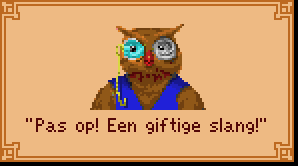
(made with Foone’s death generator because it was quicker than modding.)
The Japanese PC-98 version? 毒, doku.
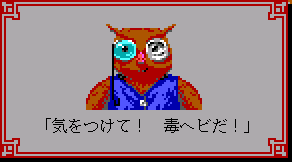
Even though doku means poison, a dokuhebi (properly 毒蛇) is very much a venomous snake.
(Note from December 15: this brings to mind a thing from Orphan Subs’ Stop! Hibari-kun! release about the word wani being both crocodile and alligator.)
Of course, there is one more version left – I only listed eight so far. The ninth is a real slap in the face.

Yes, let’s rewrite the entire game so it can run on the NES and not finally fix this while you have the chance.
So basically English is the only language I’ve seen KQ5 in where there’s separate words for “it bites you, you die” and “you bite it, you die”, and none of the English versions get it right!




